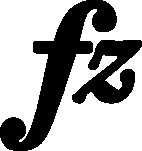



|
b. 4
|
composition: Op. 10 No 2, Etude in A minor
..
The category imprint: Graphic ambiguousness; Interpretations within context; Differences between sources issues: Long accents , Errors in FE , Sign reversal |
|||||||||
|
b. 4
|
composition: Op. 10 No 2, Etude in A minor
..
The accent visible in FE (→GE,EE) should be rather interpreted as a short one, yet in FE even shorter signs were used, e.g., in the Etude in C major, No. 1, bars 1-2. Also the sign put in Ap (next to category imprint: Interpretations within context; Differences between sources issues: Long accents |
|||||||||
|
b. 4
|
composition: Op. 10 No 2, Etude in A minor
..
The authenticity of the b note's hold is undoubtedly certified only in Ap (only in this bar – cf. bars 12 and 39). The ties featured in a part of the first editions are either possibly (GE) or certainly (EE3, probably under the influence of GE) a revision. Arbitrarily added, allegedly missing ties in the places in which not all components of two-note chords or chords are held with ties are to be found in first editions of Chopin's pieces on a number of occasions. To the main text we adopt the undoubtedly authentic version of FE (→EE2→EE3). category imprint: Differences between sources issues: EE revisions , GE revisions |
|||||||||
|
b. 4
|
composition: Op. 10 No 2, Etude in A minor
..
Here, as well as in bar 12, yet not in bar 39, Chopin deleted semiquaver flags for the d
It can be observed that the initial and, as it turned out, the final concept of the homogenous part of the R.H. in terms of sound and pianistics was subject to internal verification by Chopin until the very end of the Etude's publication process. See bars 3-4. category imprint: Corrections & alterations; Source & stylistic information issues: Chopin's hesitations |
|||||||||
|
b. 4
|
composition: Op. 10 No 2, Etude in A minor
..
Chopin took the decision to lower the fifth already at the stage of preparing the base text for FE. Ap also has the final version with f. Similarly in analogous bars 12 and 39. category imprint: Differences between sources issues: Accompaniment changes |

 in
in 
 in
in 

 & accent in
& accent in 



 1-a1 tritone in the lower voice in
1-a1 tritone in the lower voice in 
